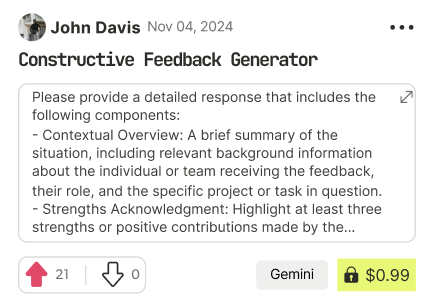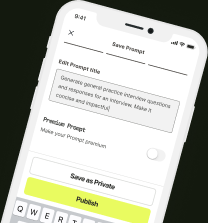prompt mine App
Find, Create & Share AI Magic
Strategic Guidance for Migrating from Oracle E-Business Suite 12.1 to Oracle Cloud ERP
Drawing upon 15 years of experience in complex ERP migrations, I understand the unique challenges posed by transitioning from a highly customized, on-premise Oracle E-Business Suite (EBS) environment, especially within the demanding manufacturing sector. Your concerns about maintaining functionality, preventing operational disruption, and adhering to a fixed timeline and budget are common and absolutely valid. This guidance outlines a strategic approach to navigate this transition successfully.
1. ASSESSMENT SUMMARY:
Current State: You are operating on Oracle EBS 12.1, a stable but aging on-premise platform. The presence of heavy customizations, particularly around manufacturing processes, indicates a significant potential for complexity in migrating to a standardized cloud environment. Your environment is likely integrated with various legacy or third-party systems supporting shop floor control, supply chain, or quality management.
Migration Objective (Implied): Modernize the ERP platform, potentially improve scalability, leverage cloud capabilities, and standardize processes where possible, while maintaining critical manufacturing functionality.
Constraints: An 18-month fixed timeline and a fixed budget introduce pressure for precise planning, scope control, and efficient execution. Worryingly, the market context shows 68% of ERP migrations exceed budget and data quality issues cause 38% of delays, highlighting the need for rigorous management.
2. RECOMMENDED APPROACH:
Given the heavy customizations and the critical nature of manufacturing operations, a phased, iterative approach is strongly recommended over a 'big bang'. This strategy minimizes disruption, allows for lessons learned between phases, and manages risk more effectively.
Phase 1: Foundation & Core Financials/Procurement (Approx. 6-8 months): Stabilize core foundational data and processes like General Ledger, Accounts Payable, Accounts Receivable, and basic Procurement. This builds confidence and allows the team to become familiar with the Oracle Cloud ERP platform. Simultaneously, perform a deep analysis of manufacturing customizations.
Phase 2: Manufacturing & Supply Chain (Approx. 8-12 months): Address the complex manufacturing processes. This phase requires careful re-engineering of processes to leverage standard Oracle Cloud ERP capabilities as much as possible, identifying where Configuration or Extensions (utilizing Oracle's PaaS capabilities like VBCS or Integration Cloud) are necessary to meet unique requirements not supported by standard SaaS. Include Inventory, Order Management, discrete or process manufacturing modules, and potentially Supply Chain Planning.
Phase 3: Reporting, Analytics, & Advanced Modules (Approx. 1-2 months): Implement advanced reporting, analytics, and potentially other modules like Human Capital Management (HCM) or Customer Relationship Management (CRM) if within scope and budget.
Phase 4: Go-Live & Stabilization (Ongoing): Execute the phased cutovers and focus on post-go-live support and system stabilization.
Timeline Estimation: The 18-month timeline is aggressive for a highly customized manufacturing environment but achievable with tight scope management, experienced resources, and decisive governance. Allocate sufficient buffer time (at least 15-20%) within each phase for unforeseen issues.
Resource Allocation: You will need a dedicated internal core team (Project Manager, Functional Leads for Finance, Manufacturing, Procurement, Technical Lead) with deep knowledge of your current EBS processes and data. Supplement this with an experienced Oracle Cloud implementation partner with a proven track record in manufacturing migrations and handling EBS customizations. Include Subject Matter Experts (SMEs) from critical business areas (e.g., shop floor managers, production planners) throughout the project.
3. CRITICAL SUCCESS FACTORS:
Executive Sponsorship: Strong, visible support from senior leadership is paramount to drive cross-departmental collaboration, resource allocation, and decision-making speed.
Detailed Customization Analysis & Rationalization: Conduct a forensic-level analysis of every customization. Determine if the requirement is still valid, whether standard Oracle Cloud functionality can meet it (with configuration), or if a specific extension/PaaS solution is required. Prioritize ruthlessly – not all customizations need to be replicated.
Data Quality and Governance: Establish a robust data governance framework early. Cleanse, transform, and validate data meticulously before migration. Poor data quality is a primary cause of delays and failed implementations.
Process Re-engineering and Adoption: This isn't just a technical upgrade; it's a business transformation. Be prepared to adapt business processes to align with standard Oracle Cloud workflows where beneficial, particularly in manufacturing. Focus heavily on user adoption post-migration.
Integrated Testing: Develop comprehensive testing plans that cover not just individual modules but also end-to-end business processes flowing across modules and integrations (e.g., Sales Order -> Production Order -> Procurement -> Inventory -> Shipments -> Invoicing -> GL).
4. RISK ANALYSIS:
Risk: Loss of critical manufacturing functionality due to heavy customizations.
Mitigation: Detailed fit-gap analysis during assessment. Prioritize required functionality vs. "nice-to-have." Leverage Oracle's PaaS tools (like VBCS, Integration Cloud) strategically for unavoidable extensions, but only after exhausting standard SaaS configuration options. Prototype critical custom processes in the cloud environment early.
Risk: Operational disruption during phased cutovers, especially impacting manufacturing schedules or inventory accuracy.
Mitigation: Meticulous planning of cutover activities, including detailed downtime estimates and contingency plans. Conduct rigorous testing of manufacturing processes in a simulated environment. Consider running key manufacturing processes in parallel in both systems for a limited period if feasible and cost-effective. Ensure robust hypercare support immediately post-go-live for manufacturing sites.
Risk: Budget and timeline overruns due to scope creep or unforeseen complexities.
Mitigation: Establish strict project governance with clear decision-making authority. Implement formal change control processes for any deviations from the agreed-upon scope. Maintain open and frequent communication between the internal team, implementation partner, and stakeholders. Focus on delivering core value within the fixed scope and timeline.
Risk: Data migration errors impacting business operations.
Mitigation: Comprehensive data cleansing before migration. Utilize Oracle-provided data migration tools (e.g., FBDI, ADFdi) where appropriate. Perform multiple mock data loads and validations. Establish clear data ownership and sign-offs. Implement automated data reconciliation checks.
5. NEXT STEPS:
Form a Dedicated Core Team: Assemble your internal project team, identifying key functional and technical leads from your EBS environment.
Engage a Specialized Partner: Begin the process of selecting an Oracle Cloud implementation partner with deep expertise in Oracle EBS migrations, particularly in manufacturing and handling customizations.
Initiate Detailed Discovery & Assessment: Launch the formal assessment phase with your chosen partner. This involves documenting current processes, analyzing customizations in detail, evaluating data quality, and performing an initial fit-gap analysis against standard Oracle Cloud ERP capabilities.
Define Project Governance: Establish the project structure, reporting lines, decision-making processes, and communication plan.
Develop a High-Level Roadmap: Based on the initial assessment, draft a detailed phased implementation roadmap, including potential go-live waves and module sequencing, validated against your 18-month timeline and fixed budget.

Find Powerful AI Prompts
Discover, create, and customize prompts with different models, from ChatGPT to Gemini in seconds

Simple Yet Powerful
Start with an idea and use expert prompts to bring your vision to life!

